ARCHITECTURAL PROJECTS
MUSEUM
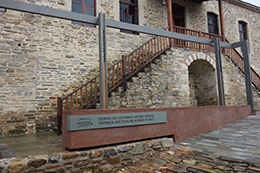
17 February, 2017
Historical and Folklore Museum of Nikiti
Museographical Study | A Continuous Infrastructure
Landscape Design | Convergent Lines
An old cobblestone path leads us uphill to the courtyard surrounding the Historical and Folklore Museum of Nikiti. This movement is but a starting line; thereon, the ground is engraved by convergent lines that transcend the physical boundaries of the courtyard and organize its interior. On the crest of this amphitheatrically-built historic village, along these traces, the historical memories of this locus converge.
Clusters of parallel lines are linked to these primary traces; they are led either as extensions of the clear geometry of the building or as perpendicular projections to the predominant courses of the traces. Primary traces and their linked lines are implemented as steel, iron or wooden constructions, cobblestone paving boundaries and directions, joints, steps, movable stages, lighting fixtures that create flows, covers for electromechanical installations.
The new Museum converges on its surrounding courtyard and through it, on the listed historic village of Nikiti.
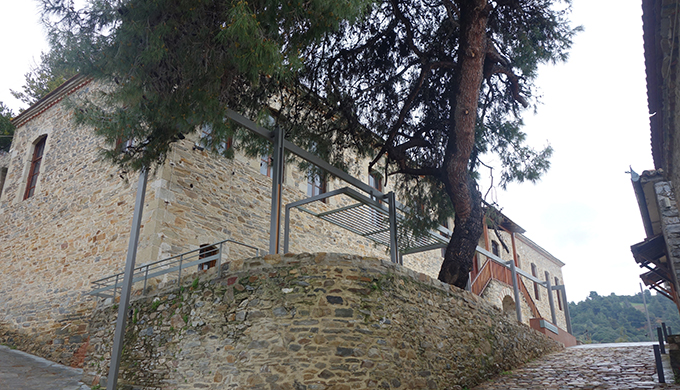
Museographical Study | A Continuous Infrastructure
A stone-wall building dating back to 1870 once housed the Nikiti Primary School. Nowadays, this longitudinal, listed building is home to the Historical and Folklore Museum of Nikiti. Within the former classrooms of the old school, the complex structure of the museum unfolds. The simplicity of the old classrooms’ furnishings has given way to the complexity of the furnishings used for the display, arrangement and protection of the exhibits, to a diversity of materials and to the exhibits themselves. The challenging task of knowledge dissemination continues, albeit taken to a different level. Continuity, the demand for a continuous journey through time and knowledge, is featured as the guiding component of the concept.
The design of a continuous infrastructure serves as a predominant manifestation of the continuum. The continuous infrastructure, as an extension of the same features of the building, supports the design of the permanent exhibition, as well as any future redesigns. This infrastructure is composed of a connecting metal structure and a penetrating wooden panel.
– The 66-meter long connecting metal structure penetrates the inner walls as it travels from hall to hall. This rectangular metal structure (a UPN 180 steel profile) is arrayed along the longitudinal axis of the building, and is supported, at a height of 3.25 meters from the floor, by abstract frames (vertical UPN 100 steel profile frames, of a controlled number and of defined dimensions).
– The 22-meter long penetrating wooden panel, which is also arrayed along the longitudinal axis of the building, functions both as a supporting structure for printed panels and exhibits and as an exhibit in its own right, reminiscent of the now-missing lath-and-plaster inner walls.
This continuous infrastructure is accompanied by a set of display stands. On these stands, taking themselves the form of steel frames, printed panels are mounted; lighting fixtures are fitted on their brackets and on the wooden platforms arranged in front of them exhibits are displayed. These stands also function to protect the adjacent furnishings and to demarcate the individual themed areas of the museological study, and sharing the same geometry, same height and same constructional characteristics (UPN 140 and UPN 100 steel profiles) as the connecting metal structure, since in essence they are continually repeated, they mean to define the continuum theme from another perspective.
In contrast to the powerful penetrating ability of the connecting metal structure and the penetrating wooden panel, all of the furnishings and exhibits keep a discreet distance from both the outer and inner walls.
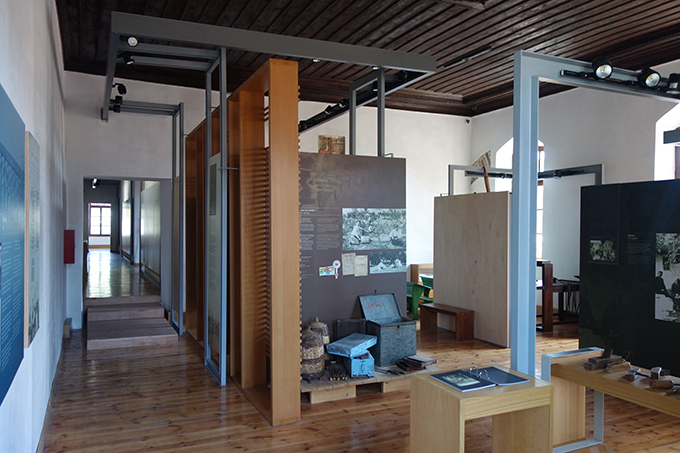
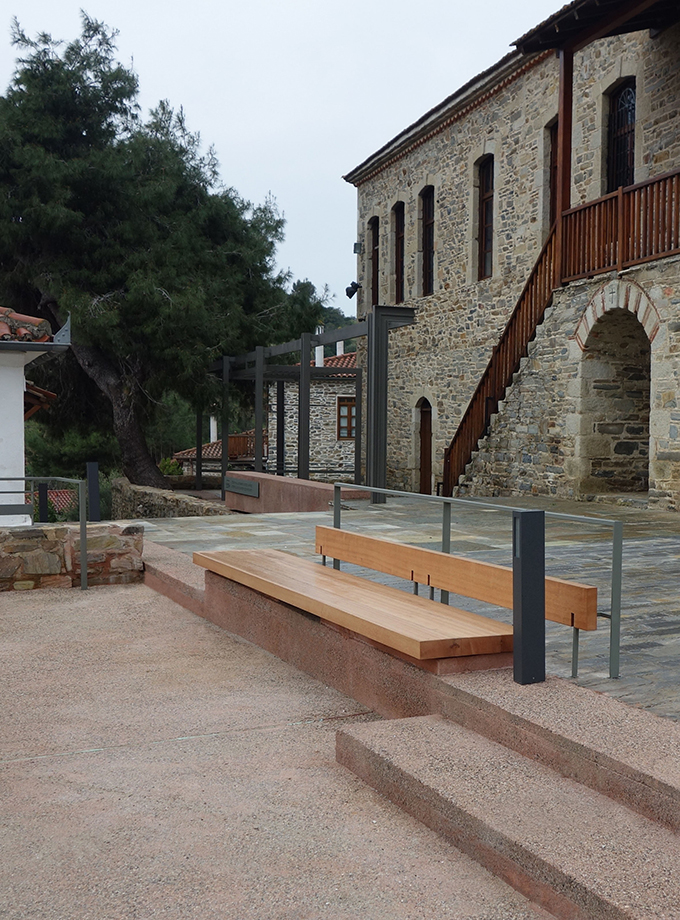
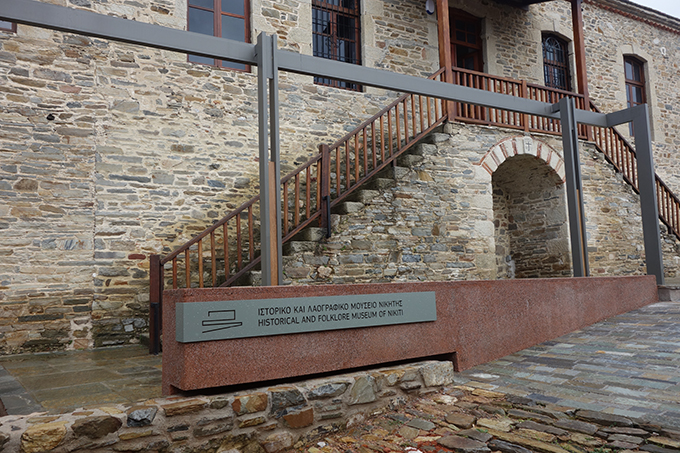
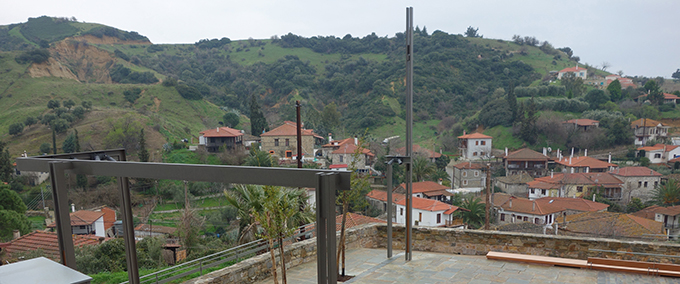
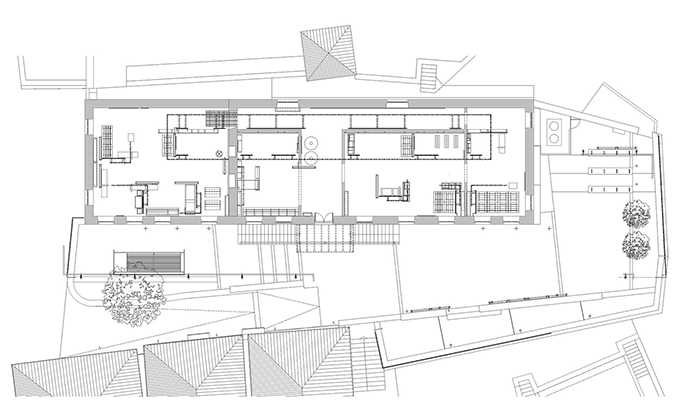
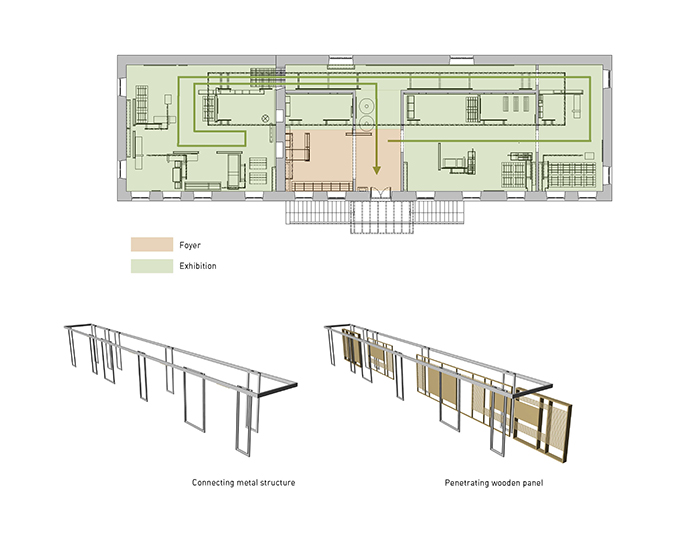
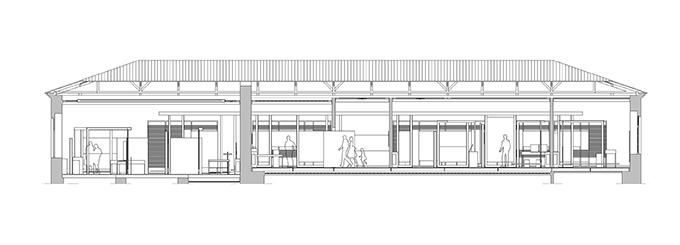
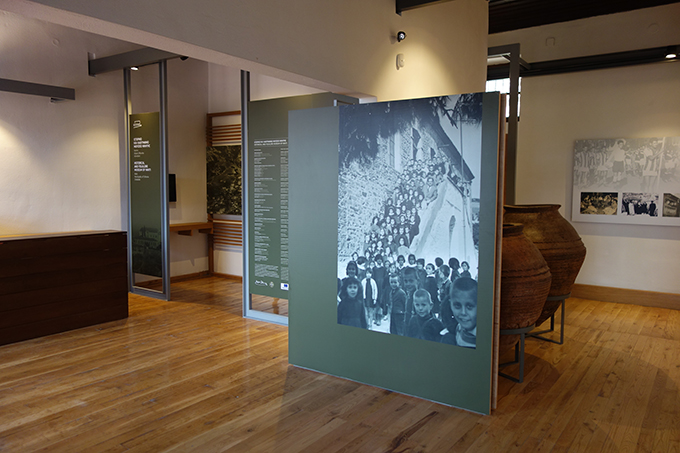
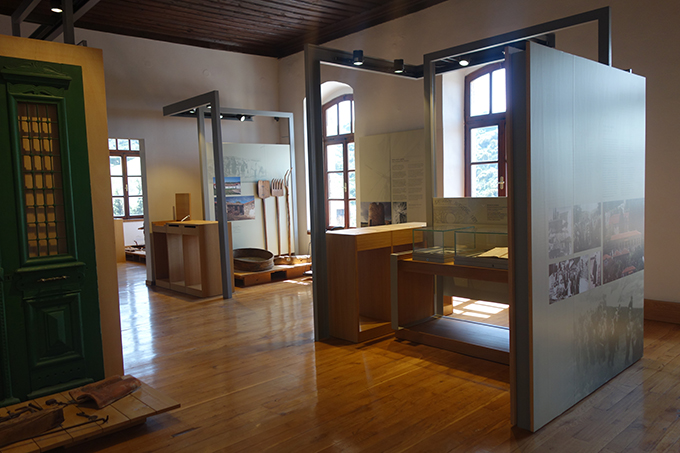
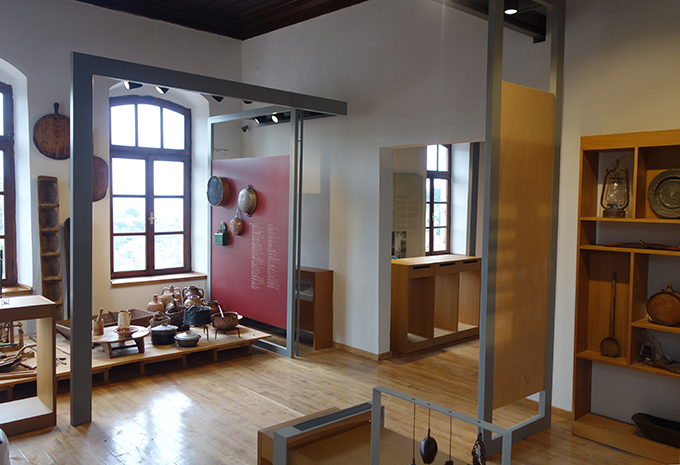
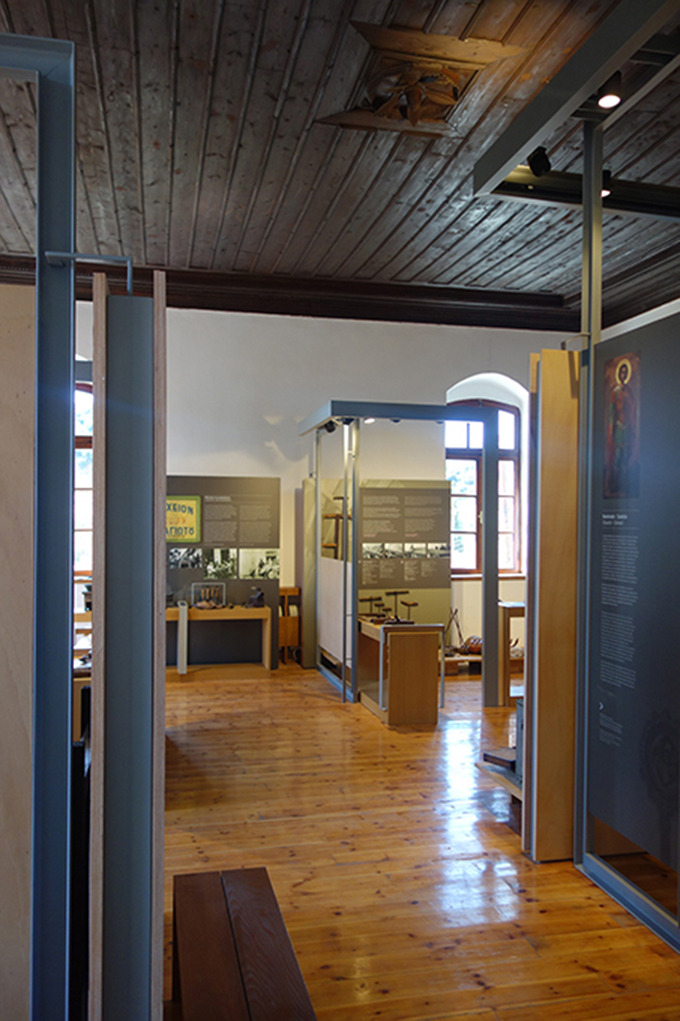
Project team members
Manios Papidou Architects: Dimitris Manios, Dora Papidou
Supervision: Dimitris Manios, Dora Papidou
Museological study: Nefeli Liontou (Archaeologist-Museologist), Artemis Stamatelou (Archaeologist-Museologist)
Exhibition curators: Thalia Akrivopoulou (Archaeologist), Nefeli Liontou (Archaeologist-Museologist)
Conservation & mounting of exhibits: Stephanie Veldemiri (Conservator of Antiquities and Works of Art), Anastasios Boukouvalas (Conservator of Antiquities and Works of Art)
Graphic design: Lefteris Kontogiannis (Graphic designer)
Metal constructions: Siderografima SA
Wood constructions: Rokas Bros GP
Display cases: ANACO
Contractor: M&K Technical Works SA
Total area (indoor & outdoor): 1025m²
Completed: 2014
Distinctions:
– The project participated in the Exhibition of Contemporary Greek Architecture of the XXIV International Festival of Architecture and Design Zodchestvo-2016 in Moscow.
– The Museum participated in the International Conference We are Museums 2016, Bucharest, Rumania.
Related articles:
- UNDERGROUND MUSEUM IN PALIOURI DIMINIOU OF PHYSICAL DISCIPLINE AND BODY INCARCERATION ( 26 August, 2007 )
- Moderna Museet Malmö ( 10 May, 2010 )
- NEW PATRAS MUSEUM ( 12 October, 2009 )
- NATIONAL RESISTANCE MUSEUM AND MONUMENT TO ELECTRA APOSTOLOU IN NEON HERAKLEION, ATHENS ( 19 October, 2009 )
- Small mining museum and centre of environmental research in Itea. ( 17 July, 2010 )
- 3rd Prize for a Greek entry in an international architectural competition ( 20 September, 2010 )
- ATHENS COMICS MUSEUM at Gkazi ( 10 February, 2011 )
- Costume Culture Museum ( 10 February, 2011 )
- Stone Bridge Museum ( 18 September, 2012 )
- “Urban intervention network in Plato’s Academy_A Museum of the city of Athens proposal” ( 10 April, 2011 )
- Transformation of the warehouse of tobacco Papapetrou in an Archeological museum of Aitoloakarnanias and cultural centre of Agrinio ( 08 May, 2011 )
- Los Angeles Museum of the Holocaust ( 15 June, 2011 )
- Archaeological Museum of Arta ( 12 August, 2013 )
- "Earth Museum" ( 05 January, 2012 )
- Venetian Arsnals of Chania ( 24 January, 2012 )
- New Taipei City Museum of Art, Conceptual Design International Competition August 2011 ( 08 February, 2012 )
- Mining Museum in Serifos ( 15 February, 2012 )
- Riverside Clubhouse ( 10 March, 2012 )
- New Glasgow Riverside Museum of Transport ( 24 April, 2012 )
- Enzo Ferrari Museum ( 23 April, 2012 )
- Bunker 599 603 ( 06 May, 2012 )
- Heidelberg Castle’s new Visitor Center ( 24 May, 2012 )
- Grand Egyptian Museum in Cairo ( 22 January, 2013 )
- Guggenheim Museum in Helsinki ( 22 March, 2013 )
- Noesis. Interactive Museum ( 20 May, 2013 )
- Danish National Maritime Museum ( 28 November, 2013 )
- Redefining Leftovers ( 05 April, 2014 )
- Cultural center of Glyfada ( 23 February, 2014 )
- The rack railway museum at Vouraikos gorge ( 18 April, 2014 )










